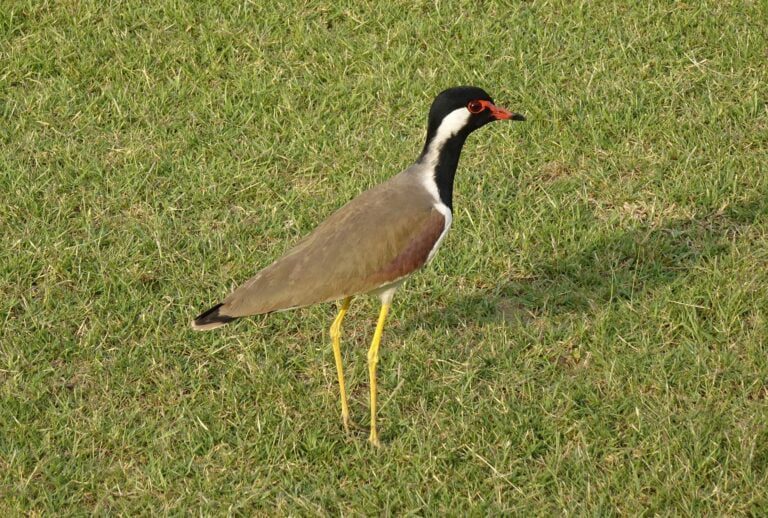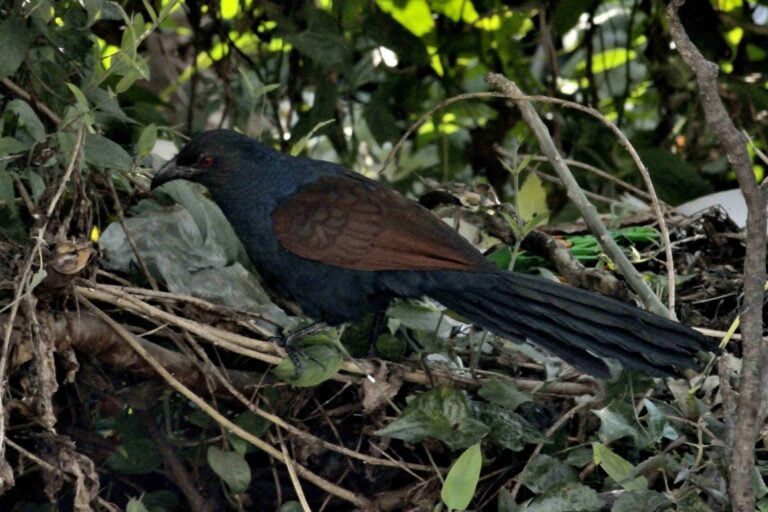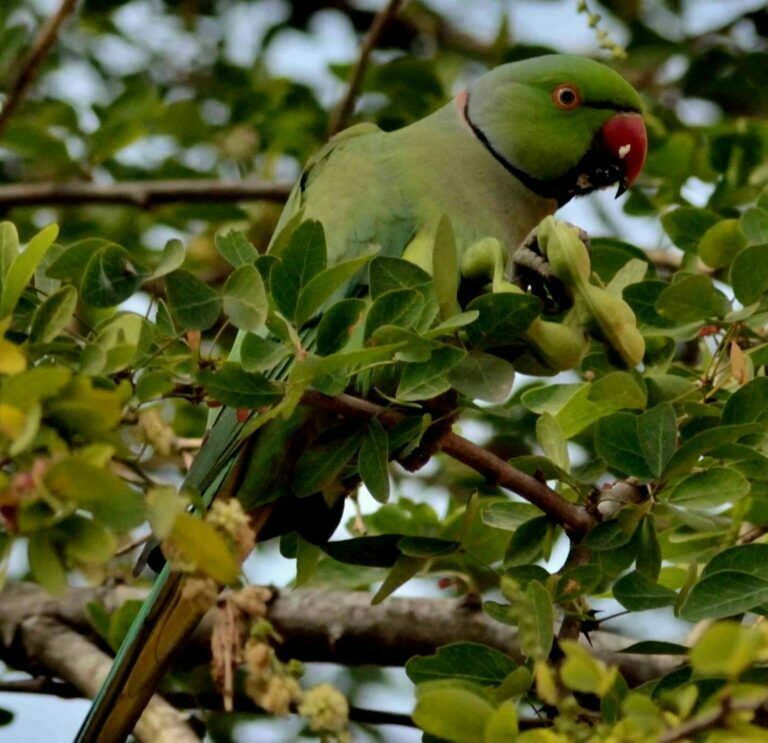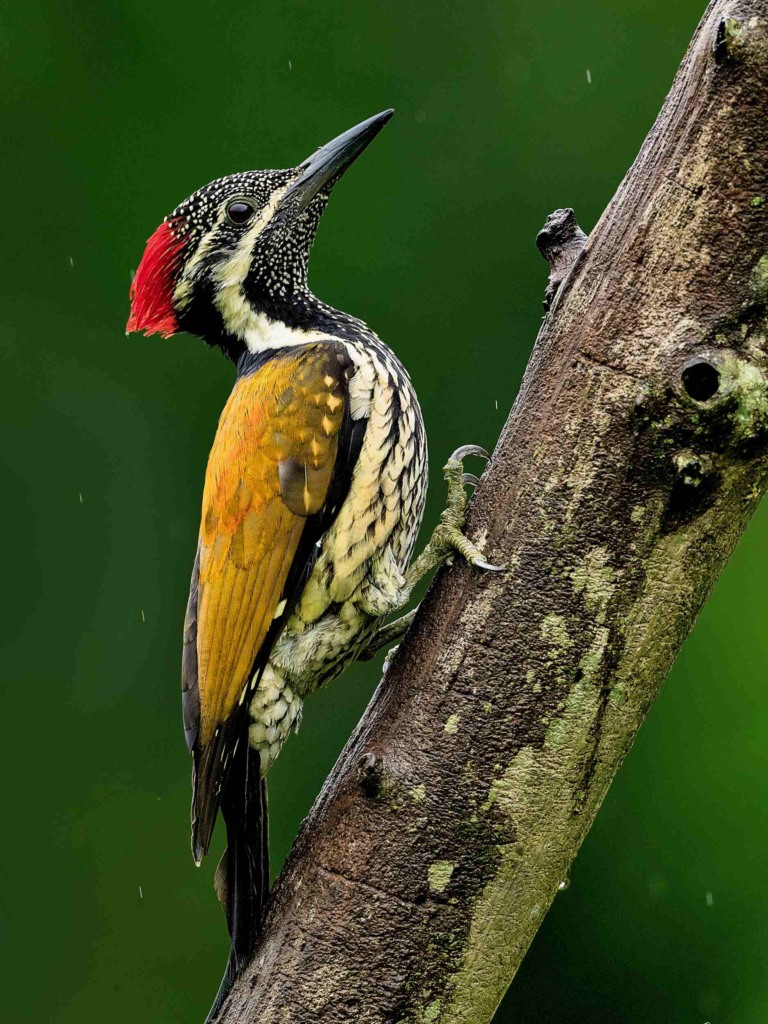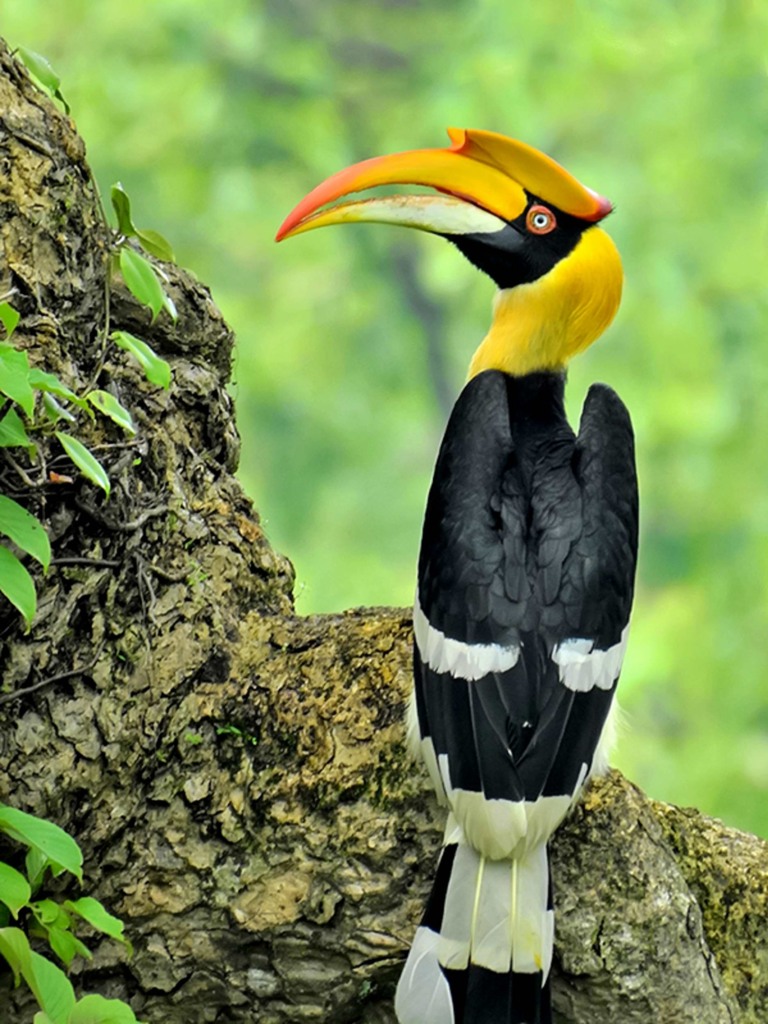The black-hooded oriole (Oriolus xanthornus) is a member of the oriole family of passerine birds and is a permanent resident breeder across tropical southern Asia, spanning from India and Sri Lanka to Indonesia. This bird predominantly inhabits open woodlands and cultivated areas.
Their nests are intricately woven into trees and typically contain two eggs. Their diet mainly comprises insects and fruits, with figs being a particular favorite, often found in the treetop canopies where they spend a significant portion of their time. Here are some key details about the black-hooded oriole:
Black-hooded Oriole Information
The male black-hooded oriole is visually striking, boasting the typical black and yellow oriole coloration. Its plumage is primarily yellow, featuring a solid black hood as well as black markings on the wings and tail center. In contrast, the female black-hooded oriole is less vibrant, displaying greenish underparts but retaining the distinctive black hood.
Juvenile birds resemble the female but possess dark streaks on the underparts, and their hood is not entirely black, particularly on the throat. This black head serves as a clear distinction from the Indian golden oriole, which visits northern India during the summer months.
Description of the Black-Hooded Oriole
Orioles, including the black-hooded oriole, can be somewhat elusive, with even the male being challenging to spot amidst the dappled yellow and green foliage of the canopy. Their flight resembles that of a thrush, characterized by strength and directness, often including shallow dips when covering longer distances. While foraging, these birds employ various techniques such as foliage-gleaning, wood-gleaning, or sallying.
Interestingly, the black-hooded oriole shares its habitat with humans in both rural and urban areas of India. A folk tale from Bengal recounts the transformation of an unfortunate merchant’s daughter-in-law, who endured mistreatment by her mother-in-law.
Troubled by her experiences, she covered herself in turmeric paste, concealed herself with a sooty earthen pot, and tragically ended her life. According to legend, a goddess resurrected her in the form of a black-hooded oriole. In Bengali culture, the bird is known as benebou (Bengali: বেনেবউ/ইষ্টিকুটুম), signifying the merchant’s wife, and “haldi pakhi,” referring to the turmeric bird.
Appearance
1. Plumage: These orioles are characterized by their vibrant and contrasting plumage. Adult males exhibit a striking appearance with a black head and throat, which extends down to their upper breast. The rest of their body is a brilliant golden-yellow, creating a sharp contrast with the black hood.
In contrast, females and juveniles have a more subdued coloration. They lack the striking black hood and are predominantly yellowish-olive on their upperparts, with yellowish underparts.
- 2. Size: The black-hooded oriole is a moderately sized bird with a length ranging from approximately 28 to 32 centimeters (11 to 12.6 inches).
- 3. Bill: They possess a relatively long, slightly curved bill, which is black in color and well-suited for their diet.
- 4. Eyes: Dark and inconspicuous eyes are a characteristic of both males and females.
Habitat and Distribution
5. Habitat: The black-hooded orioles are primarily found in a range of habitats, including woodlands, forests, gardens, and cultivated areas. They are often associated with wooded regions and are known to inhabit both lowland and hilly areas.
6. Distribution: These orioles have a broad distribution across South and Southeast Asia. Their range spans from the Indian subcontinent, including India, Sri Lanka, and parts of Nepal, to Southeast Asian countries such as Thailand, Myanmar, Malaysia, and Indonesia. They are also spotted in some parts of China.
Behavior and Diet
7. Behavior: Black-hooded orioles are known for their melodious and flute-like calls, which are often heard in their habitat. They are generally active birds and can be seen foraging for food in tree canopies.
8. Diet: Their diet mainly consists of insects, fruits, and nectar. They are skilled at capturing insects in flight and are also known to feed on various fruits and nectar from flowers.
Breeding and Nesting
9. Breeding and Nesting: During the breeding season, these orioles construct cup-shaped nests in the branches of trees. The nests are typically well concealed among the foliage. The female lays a clutch of eggs, usually numbering two, and both the male and female share responsibilities for incubating the eggs and caring for the young chicks.
10. Conservation Status: As of the last assessment, the black-hooded oriole is categorized as a species of “Least Concern” by the International Union for Conservation of Nature (IUCN). This status suggests that their population is relatively stable, and they are not currently considered at significant risk of extinction.
In summary, the black-hooded oriole is a visually striking bird known for its vibrant plumage and melodious calls. It is widely distributed across South and Southeast Asia and thrives in various habitats, making it a fascinating and adaptable species in the avian world.

